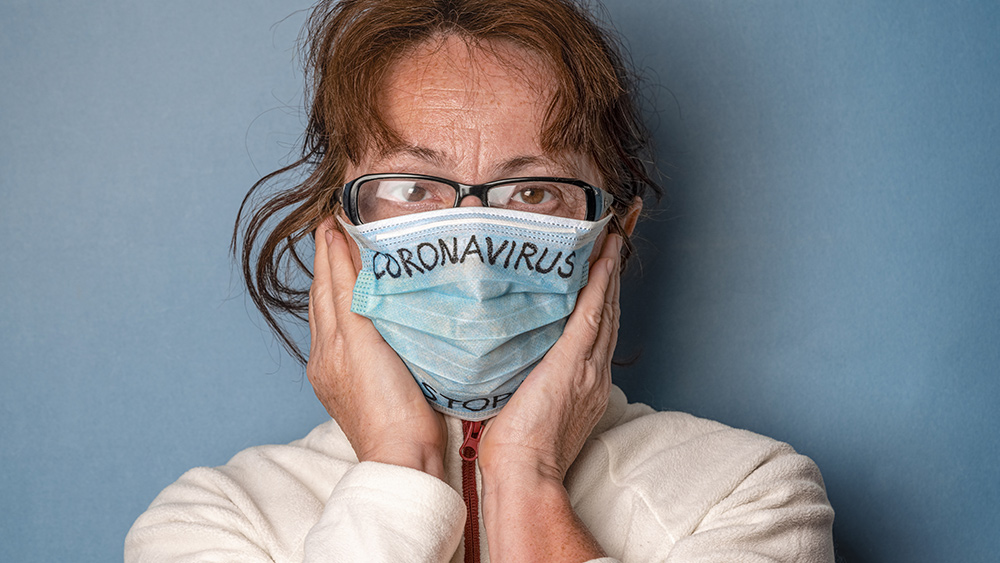Can a dirty house help fight chronic disease? Study suggests early exposure to “farm-like microbiota” helps prevent asthma in children
02/13/2020 / By Tracey Watson

There can be no doubt that proper hygiene practices like regular hand-washing are vital to maintaining good health. An understanding of how germs are spread and what makes people ill has literally saved millions of lives over the past century.
But, could it be that we have taken the pursuit of cleanliness too far? Might it be possible that a little dirt in the home could actually protect our families from certain illnesses?
A recent Finnish study, published in the journal Nature Medicine, examined the link between dirt and the development of asthma in children, and reached a surprising conclusion: A little dirt in the home can actually protect children from asthma because the bacteria in soil can build up their resistance to the condition. (Related: You know turmeric for its many health benefits; add anti-asthma to that list.)
The most common chronic childhood illness
According to the American College of Allergy, Asthma & Immunology, around 26.5 million Americans are currently battling asthma, including 6.1 million children. Asthma results in 439,000 hospitalizations and 1.3 million emergency room visits each year, and is the most common chronic childhood illness.
Asthma is generally controlled through the use of corticosteroid and anti-inflammatory medications, as well as by taking measures to try to avoid or minimize exposure to common asthma triggers like dust mites, ragweed, pollen or animal dander. Irritants in the air, like smoke and chemical fumes, as well as extremely dry, wet or windy weather conditions, can also trigger asthma attacks and cannot always be avoided.
Managing asthma can be a costly and difficult enterprise, taking a toll on the family and limiting the activities a child can partake in. And sadly, despite the availability of medications to treat the condition, around 3,500 people still die from asthma every year. (Related: Asthma explained by common allergy to milk and dairy products.)
Replicating a farmyard environment in the home
Interestingly, as reported by the U.K.’s Daily Mail, the Finnish study referenced above found that a child’s risk of developing asthma is lowest when his or her home environment mimics that of a farmyard:
Researchers from the National Institute of Health and Welfare in Finland analysed the range of bacteria in 1,400 homes in Finland and Germany. …
Exposure to greater numbers of bacteria species which usually belonged outdoors made children’s lungs healthier.
Study co-author, Pirkka Kirjavainen, explained, “The key characteristic of microbiota in homes protecting from asthma appears to be large abundance of bacteria which originate from the outdoor environment and are beneficial or harmless to health, relative to bacteria that are a potential threat to our health.”
Previous studies have found that children who grow up on farms where there are animals have a 50 percent lower risk of developing asthma and allergies than those who grow up in the cities.
The Mail explained why:
Although there were more of certain strains of bacteria, there were fewer of those which would normally be found in the human lungs or which could cause breathing infections.
Obviously, a large percentage of the population no longer live on farms but make their homes in urban areas. How can parents in these families improve their children’s resistance to asthma? Don’t ask everyone to take their shoes off at the door! The researchers found that wearing shoes indoors that have first been worn outdoors can also introduce a significant number of the same protective bacteria common on farms into the home.
So, if you can’t live on a farm, at least bring the outdoors in as much as possible, thereby exposing your family to the healthy bacteria in soil proven to prevent asthma.
Learn more ways to prevent chronic and acute illnesses at Prevention.news.
Sources include:
Tagged Under: asthma, asthma prevention, bacteria, childhood asthma, children, farm, farm living, germs, hygiene, immunity, natural health, prevention, remedies, research, soil




















